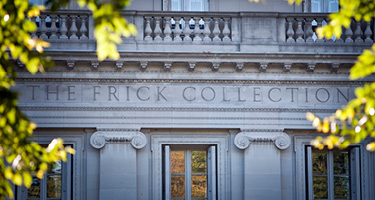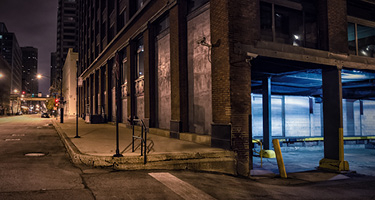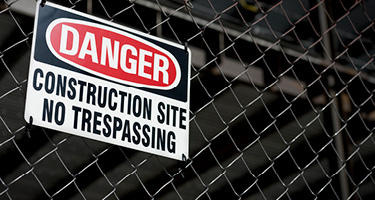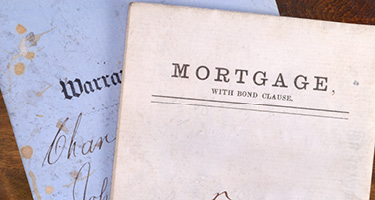Judgments of foreclosure and sale granted in favor of lenders are being reversed. This article highlights the underdiscussed expanded burden now imposed by the Second Department that lenders must satisfy to successfully foreclose on a defaulted loan. Many foreclosure proceedings already at the judgment stage are being unwound for the proofs submitted by the lenders years prior when moving for summary judgment now being considered insufficient to prove that the loan is actually in default. These 11th hour reversals of foreclosure judgments, however, can and should be avoided from the start.
In order for a lender to establish its prima facie entitlement to judgment as a matter of law in an action to foreclose a mortgage, the lender “must produce the mortgage, the unpaid note, and evidence of default.” CitiMortgage v. McKenzie, 161 A.D.3d 1040, 1040 (2d Dep’t 2018). For as long as practitioners can remember, a sworn statement from the lender or the lender’s servicer based on business records confirming that the loan is in default was enough to achieve summary judgment and the appointment of a referee to report on the amount due. Not anymore. The actual business records relied upon must now be produced to prove that a borrower is in default on a loan.
With many foreclosure proceedings now actively pending in the system for years due to borrower delay tactic litigation, court backlogs, and legislative stays and delays before getting to the final stage of a judgment of foreclosure and sale, this changed standard to prove the default is unraveling the oldest of proceedings in the Second Department to the detriment of the lenders. Practitioners must learn how to prove the default from the start to ensure that any judgment granted is airtight and not later overturned to catapult the lender back to the very beginning.
Proving the Default in the Second Department
As was recently reiterated by the Second Department in Wilmington Savings Fund Society, F.S.B. v. McLaughlin, 2021 NY Slip Op 04576 (2d Dep’t 2021), a foreclosing plaintiff can establish a borrower’s default on a loan by submitting an affidavit from an affiant with authority that lays the proper foundation for the admission of business records that will prove the default, but that also includes the actual business records relied upon. As was highlighted in Deutsche Bank National Trust Co. v. Hossain, 2021 NY Slip Op 04480 (2d Dep’t 2021), the failure to attach the business records to substantiate the default will be deemed a failure to demonstrate “proof of the facts constituting the claim” in the Second Department. Assertions in a sworn affidavit without the supporting business records annexed now constitute nothing more than inadmissible hearsay in this context. Bank of Am., N.A. v. Huertas, 195 A.D.3d 891 (2d Dep’t 2021).
Determining what constitutes sufficient evidence to prove that a loan is in default varies on a case by case basis. Certainly, a borrower’s admission made in response to a notice to admit will suffice, or an affidavit from a person with actual personal knowledge of the default will meet the burden as well. Deutsche Bank National Trust Co. v. McGann, 183 A.D.3d 700 (2d Dep’t 2020).
Less clear, however, is the type of business record that an affidavit can review and provide to sufficiently prove the default. The Second Department continues to hold, as recently as Flatbush Two v. Morales, 190 AD 3d 826 (2d Dep’t 2021), that there “is no requirement that a plaintiff in a foreclosure action rely on any particular set of business records to establish a prima facie case, so long as the plaintiff satisfies the admissibility requirements of CPLR 4518(a), and the records themselves actually evince the facts for which they are relied upon.”
It was made clear, though, that an affidavit annexing only a default notice as the substantiating business record will fail to prove the default in the Second Department. In Wilmington Savings Fund, F.S.B. v. Peters, 189 A.D.3d 937, 939 (2d Dep’t 2020), the Second Department held that while the affiant established that she was familiar with the servicer’s recordkeeping practices and procedures, she was unable to demonstrate the borrower’s default in payment, since the only business records annexed and incorporated into the affidavit were two notices of default and “no payment records were proffered with the motion.” In U.S. Bank N.A. v. Rowe, 194 A.D.3d 978, 980 (2d Dep’t 2021), the Second Department reiterated that where the only business record annexed is the notice of default, the default in payment is not established.
The Second Department also makes clear that if the loan was in default prior to the foreclosing plaintiff owning the note, then an affidavit with annexed business records to prove the default must also lay the proper foundation for the admission of business records from the predecessor note owner or servicer.
As was most recently decided by the Second Department in Bank of NY Mellon v. Deloney, 2021 NY Slip Op 4655 (2d Dep’t 2021), an affidavit is insufficient to prove a default where the affiant “did not attest that he was personally familiar with the record-keeping practices and procedures of the plaintiff or those of the plaintiff’s predecessor in interest, or that the records generated by the plaintiff’s predecessor in interest were incorporated into the plaintiff’s own records or routinely relied upon in its business, and failed to attach any business records of the plaintiff or its predecessor in interest to his affidavit.”
In Tri-State Loan Acquisitions III v. Litkowski, 172 A.D.3d 780, 783 (2d Dep’t 2019), for another example, the Second Department held that “the plaintiff failed to establish the defendant’s default in payment under the note” because, while the affiant attested to his affidavit being based on the books and records maintained by the plaintiff, “he failed to lay the proper foundation for admission” of the records from the prior note owner.
The court took issue with the affiant not stating that the prior note owner’s records “were provided to plaintiff and incorporated into the plaintiff’s own records,” not asserting that “the plaintiff routinely relied upon such records in its business,” and not attesting to having personal knowledge of the “business practices and procedures” of the predecessor note owner. “[T]he mere filing of papers received from other entities, even if they are retained in the regular course of business,” is just no longer enough. Id.
The First, Third, and Fourth Appellate Divisions
The First Department seemingly does not place the same burden on lenders to annex the referenced business records to the sworn affidavits asserting that a loan is in default. In United Nations Fed. Credit Union v. Diarra, 194 A.D.3d 506 (1st Dep’t 2021), the First Department unanimously affirmed the granting of summary judgment stating that the “Plaintiff also submitted an affidavit of its loss mitigation analyst, who averred that he had first-hand knowledge of the facts surrounding the action, reviewed plaintiff’s business records, and determined … that defendant had defaulted on the loan,” with only copies of the default notices and the loan documents submitted in additional support.
A recent decision in the Third Department falls in line with the First Department’s standard. In Bayview Loan Servicing v. Freyer, 192 A.D.3d 1421, 1423 (3d Dep’t 2021), the Third Department found that the affiant “established personal knowledge of plaintiff’s business practices and procedures” and that records provided by the sub servicer of the loan “were incorporated into its own records and routinely relied upon,” however, annexed as business records were only copies of the default notices and a letter log history not showing a loan default date or any pay history, and the sworn affidavit was nonetheless found to be sufficient to establish the borrower’s default.
There are no recent Fourth Department cases on point.
Establishing the Amount Due Under the Loan
After a lender establishes that a borrower is in default, an order of reference is entered, and the lender goes on to prove the actual amount due under the defaulted loan. In the affidavit of computation prepared for presentation to the appointed referee to consider in support of the amount due, the lender will again need to establish the proper foundation for the admissibility of business records to prove the stated amount due and, further, will need to actually produce those referenced and relied upon records. A sworn affidavit that lists and even delineates the amounts owed from a review of business records, alone, is no longer sufficient.
In Wilmington Savings Fund Society, F.S.B. v. Isom, 190 A.D.3d 786, 788 (2d Dep’t 2021), following its same standard for proving that a loan is in default, the Second Department held that the affidavit that was submitted to establish the amount due and owing under the loan “constituted inadmissible hearsay and lacked probative value because the affiant did not produce any of the business records he purportedly relied upon in making his calculations.” The referee’s finding was, therefore, not found to be substantially supported by the record, resulting in the judgment of foreclosure and sale being reversed, the referee’s report being rejected, and the plaintiff being rewound back to submitting proofs of the amount due to the referee at the oath and report stage.
Similarly, in Bank of New York Mellon v. Davis, 193 A.D.3d 803, 804 (2d Dep’t 2021), the Second Department held that “the affidavit of an employee of the plaintiff’s loan servicer, submitted for the purpose of establishing the amount due and owing under the subject mortgage loan, constituted inadmissible hearsay and lacked probative value because the affiant did not produce any of the business records she purportedly relied upon in making her calculations.”
The plaintiff in Federal National Mortgage Association v. Home & Property Works, 191 A.D.3d 847, 849 (2d Dep’t 2021) shared a similar fate, with the judgment of foreclosure and sale being reversed and the referee’s report being rejected for the plaintiff’s failure to produce the actual business records showing the amount due, thereby sending the plaintiff backwards to the computation stage with valuable time lost.
Recommendations and the Future of Business Records for Foreclosures
As the Second Department distinctly demarcates in Selene Finance, L.P. v. Coleman, 187 A.D.3d 1082, 1085 (2d Dep’t 2020), “it is the business record itself, not the foundational affidavit, that serves as proof of the matter asserted.”
Once the proper foundation for the admission of business records is established, practitioners must annex the actual business records that the affiant relied upon in confirming the default and in calculating the amount due under the loan, so as to avoid a later finding that the affidavit constitutes inadmissible hearsay. Best practice is to include a pay history, which shows the last payment received on the loan, in conjunction with a payoff statement that details all amounts due and owing.
When purchasing loans that are already non-performing, investors should require full payment histories in addition to the payoff statements for each loan. Lenders, note owners, and servicers should update their payoff statement models to always include the due date for the loan. Most importantly, however, with New York’s often lengthy litigation timelines and constantly evolving proof standards for contested foreclosures in the current climate, the practitioners are the ones that must take elevated care in introducing and producing properly vetted business records to avoid setbacks on the docket that are completely within the foreclosing plaintiff’s control.
Adam Leitman Bailey is the founding partner of Adam Leitman Bailey, P.C. Jackie Halpern Weinstein is a partner at the firm and head of it’s Foreclosure Litigation Group. Danny Ramrattan, an associate at the firm, assisted in the preparation of this article.






















